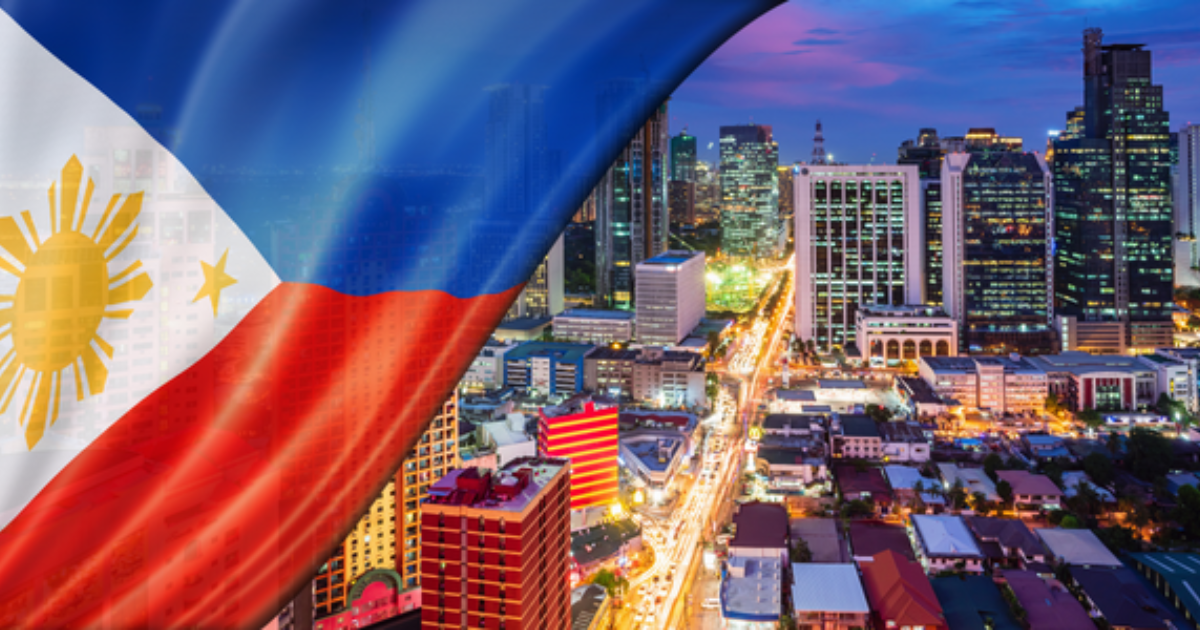by Jan Michael Carpo, Reporter
The Philippine real estate market is experiencing a robust recovery, with notable growth across both commercial and residential sectors in the first half of 2024, in the process, aiding the country’s continuing economic growth.

PH real estate market is experiencing robust recovery thanks to growth in commercial & residential sectors
Earlier this year, the Bangko Sentral ng Pilipinas (BSP) announced the results of the country’s latest economic performance, which it said grew faster (5.9%) in the 3rd quarter of 2023 based on estimates from the Department of Finance (DOF). The same advisory also stated that as of September 2023, the country’s total outstanding external financial assets stood at US$227.9 billion while the total outstanding external financial liabilities amounted to US$277.9 billion.
According to global real estate services company Santos Knight Frank (SKF), this resurgence is marked by significant developments in the office, luxury residential, retail, and hospitality sectors.
Office Sector Leading the Recovery of PH Real Estate Market
The office sector has been at the forefront of this recovery, with Metro Manila’s office market witnessing a remarkable increase in demand. Net absorption reached 281,000 square meters in the first half of 2024, doubling the total net absorption for 2023.

Photo shows Rick Santos (3rd from left), Chairman & CEO of SKF, as he does the thumbs up sign during a media briefing together with other company officials (from left:) Morgan McGilvray, Senior Director, Occupier Strategy and Solutions; Lovelle Taleon, Director, Consultancy Services; Jess de Villa, Engineering Head, Energy, Engineering and Environmental Management; Toby Miranda, Associate Director, Investment and Capital Markets; and Leo Ruiz, Research Manager.
Rick Santos, Chairman & CEO of Santos Knight Frank, attributes this growth in the Philippine real estate market to a combination of return-to-office mandates and office expansions, particularly supported by offshoring operations. “The Philippines continues to be a top destination for offshoring, thanks to its young talent pool, affordable operating costs, and ample office space,” Santos explained.
The Central Business Districts (CBDs) of Makati and Taguig are leading this resurgence. Taguig boasts a lower vacancy rate of 14.5%, compared to the Metro Manila average of 18.9%, while Makati commands the highest average asking rent at PHP 1,256 per square meter per month. The delivery of new office stock, including 127,000 square meters in the first half and an anticipated additional 299,000 square meters later in the year, underscores the sector’s strong growth trajectory.
Luxury Residential Market: Reaching New Heights
The luxury residential sector in Manila has also shown significant growth, leading Knight Frank’s Prime Global Cities Index in Q1 2024 with a 26% year-on-year increase.
This growth is driven by limited supply and high demand for ultra-luxury properties. Developments like Park Villas in Makati and Banyan Tree Residences in Manila Bay are pushing price benchmarks close to PHP 1 million per square meter.
Prime residential areas such as Forbes Park and Ayala Alabang have seen a capital appreciation of 13%, while Dasmariñas Village and Magallanes Village reported a 12 per cent increase. These trends indicate that Manila is on the verge of entering the super prime market, characterized by properties priced at USD 10 million and above.
Retail and Hospitality Sectors: Poised for Expansion

SKF says the country’s retail and hospitality sectors are now also poised for expansion
The Philippine retail sector is also undergoing significant redevelopment, with five major malls in Metro Manila — Robinsons Forum, Greenbelt 1, Trinoma, Glorietta, and Greenbelt 2 — undergoing resource-efficient transformations. These malls are quickly filling vacant spaces with expanding brands and innovative offerings, maintaining their relevance as experiential hubs despite the rise of online shopping.
The hospitality sector is set for a major 2024 expansion driven by “revenge tourism.” Five new hotels partially opened in the year’s first half, adding over 2,900 rooms upon full operation.
The upcoming launches of Somerset Valero Makati, Seda One Ayala, and Ascott DD Meridian Park will further add nearly 900 rooms, catering to the growing demand from domestic and international travellers. Key tourist destinations outside Metro Manila, such as Cebu, Davao, and Palawan are also experiencing a boom in hotel projects.
The industrial real estate sector, particularly logistics, continues to grow. This growth is driven by expanding distribution needs and emerging subsectors such as semiconductor manufacturing, pharmaceuticals, and electronic vehicles. While industrial activity is concentrated in provinces adjacent to Metro Manila, areas like Clark are also witnessing increased industrial activity.
Regulatory Reforms: Paving the Way for Greater Transparency
The Real Property Valuation and Assessment Reform Act (PRVARA), recently signed into law, aims to standardize property appraisal and valuation in the Philippines. This reform is expected to enhance transparency and attract global investors.
The law mandates the nationwide update of the Schedule of Market Values and introduces the Real Property Information System, a comprehensive database of all real property transactions.
Proposed amendments to the Condominium Act, which aim to address issues related to ageing properties and limited land availability, are now also under consideration. These reforms are expected to enhance urban resilience, sustainability, and safety.
In the end, the strong performance of the Philippine real estate market in the first half of 2024 signals a promising recovery. With substantial growth across various sectors and supportive regulatory reforms, the market is approaching pre-pandemic levels.
According to SKF, the outlook for the remainder of 2024 and beyond remains optimistic, as the country continues to attract investment and development in a rapidly evolving landscape.








